
How to Choose POS Printer
The ability to print is an essential function that each POS system should have. Usually, retail businesses need to print receipts for customers; restaurants and cafes need to print bills, receipts, and kitchen orders. The ever-growing modern trends try to find alternatives for such printed documents to nonpaper variants, such as e-receipts or messages on the kitchen screens. However, despite that, many customers still prefer the paper version or receipts.
What kind of printer will work best in your business?
First of all, check the list of supported models for your POS and select from the recommended printers. Some POS apps (like Loyverse POS) allow the connection of receipt printers besides the supported models. Such printers should correspond to specific requirements, and it is better to check if the selected model will work with your POS before obtaining it. Even if you connect another model and it works with the POS, it is always a gamble to use it. Later on, some problems may appear; for instance, printers start to make mistakes when printing long receipts or after updating the app.
The next recommendation is to choose printers of famous established brands (such as Epson and Star Micronics). Such companies produce quality equipment with stable characteristics and durable performance. Therefore, you can quickly connect their printers with your POS and use them for a long time without interrupting your selling process. Global companies also offer warranty and customer support. They have a vast network of service centers that can quickly and effectively solve possible technical issues with printers.
There are different ways of classifying receipt printers.
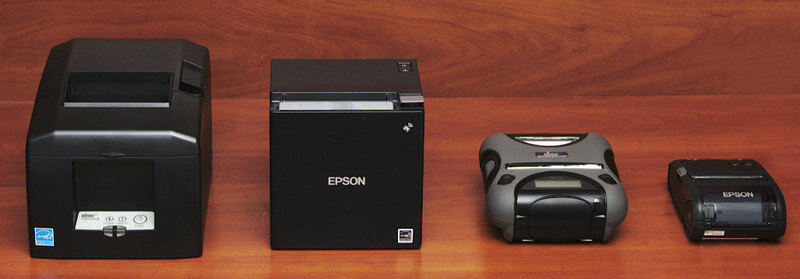 By printing ways: thermal, dot matrix, or inkjet. The most popular are thermal receipt printers. The printing process is a direct contact between the thermal head and the thermal paper, which is sensitive to heat. They are quite fast and provide good picture quality. The con of receipts printed by the thermal printer is that the receipts may lose images from other sources of heat, such as sunshine or hot air in the kitchen.
By printing ways: thermal, dot matrix, or inkjet. The most popular are thermal receipt printers. The printing process is a direct contact between the thermal head and the thermal paper, which is sensitive to heat. They are quite fast and provide good picture quality. The con of receipts printed by the thermal printer is that the receipts may lose images from other sources of heat, such as sunshine or hot air in the kitchen.
Dot-matrix printers print slowly and are noisier than the thermal ones, but their image is not affected by the heat. This kind of printer is sometimes used as kitchen printers.
By form factor: Bigger and heavier printers can contain bigger paper rolls and can print more receipts from one paper loading. Such printers have a power supply from socket outlets and are better to use in a fast-paced environment, where you have hundreds of customers a day. Mobile (moveable) receipt printers have installed batteries, are compact, and take little space on the counter, or it can even be held in the hands. But such printers are loaded with 58mm small paper rolls and are preferable in a not so busy environment. Mobile printers are also the best choice if you have difficulties connecting to the power outlet, for example, in a van or trailer selling.
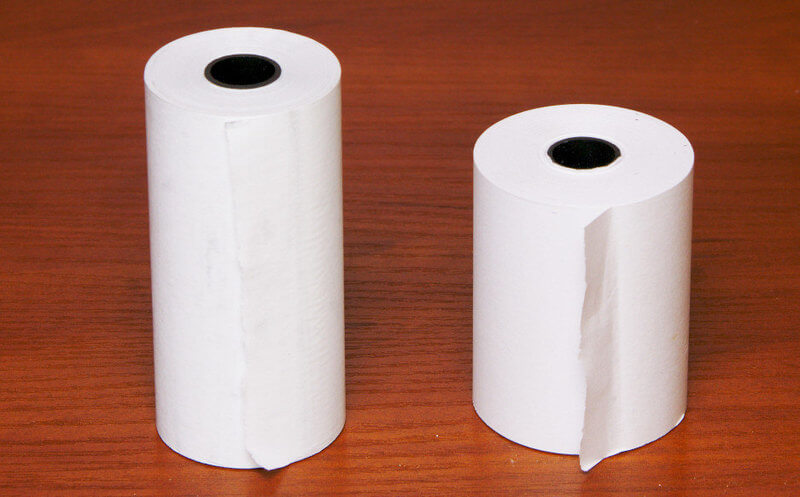
Different printer types by size: Star TSP650II, Epson TM-m30, Star SM-T300i, Epson TM-P20.
Check what the biggest size of roll paper the printer can load and check the length of the paper. If you know the average length of your receipt, you can estimate how many receipts you can print from one roll. The table below shows the number of receipts with three different receipt lengths (10, 15, and 20 cm), which comes from a paper roll of varying lengths.

There are three basic connection interfaces: Ethernet (WiFi), Bluetooth, or USB. What are the pros and cons of working through each interface? Some printers have several interfaces, and you can select the best for your types of tasks.
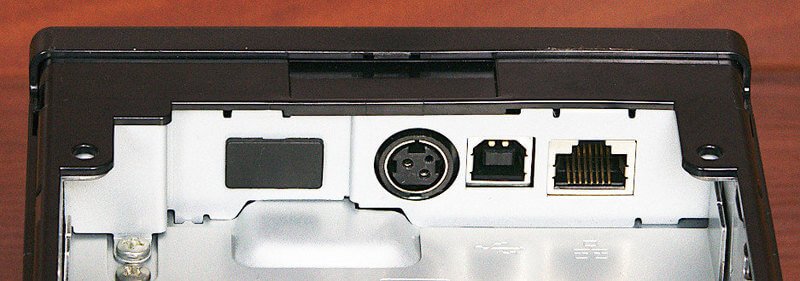
Many connection sockets of Epson TM-m30 printer: USB, Ethernet, Bluetooth
Ethernet connection provides a stable connection, small printing delay. It is possible to connect several POSes to the same printer. Cons: they require a WiFi router and wires to connect, and therefore complicate the connection process. Printers with Ethernet are the best choice if you have large facilities and you need to put printers in different rooms, especially in the kitchen. Also, it is better to have this type when you have increased customer flow.
WiFi receipt printers are Ethernet printers, but they connect with WiFi router by radio ways (WiFi) instead of cables. Such printers are similar to Ethernet printers but do not need a wire that goes to the router. They still need WiFi routers to connect to POS.
Bluetooth receipt printers do not need wires to connect with POS, and are therefore preferable to use in a limited space environment (especially with mobile printers), and where there is a short distance between the POS and the printer. Bluetooth printers are not a choice to use as kitchen printers in other rooms. Sometimes Bluetooth may lose the connection between devices, so it will take time to reconnect them. They have a printing delay for a second. Bluetooth printers are suitable for printing receipts for low customer flow.
USB receipt printers are possible to connect to the POS quickly, but they require a wire (USB cables have a limited length of a few meters). If you use POS on a mobile device, they have only one USB socket, which is also often used for charging. Thus, it may cause difficulties when you want to charge your device and connect to the printer simultaneously. This can be solved by using a special USB adapter with charging ability. It makes no sense to use such printers with mobile printers because you are tied down by the cord. If difficulties with cables do not scare you, such printers will make you happy with little printing delay, and you can use these printers in an environment of different intense sizes.
Other points that you should consider when choosing a receipt printer:

80mm and 58mm paper rolls. Different printer types and their sizes.
Printing size. Think about what is the best width of your receipts or tickets. The most common paper widths for receipt printers are 58mm and 80mm. If your items in POS have long names, it is better to choose the wider size of printing, so your names are printed without hyphenation.
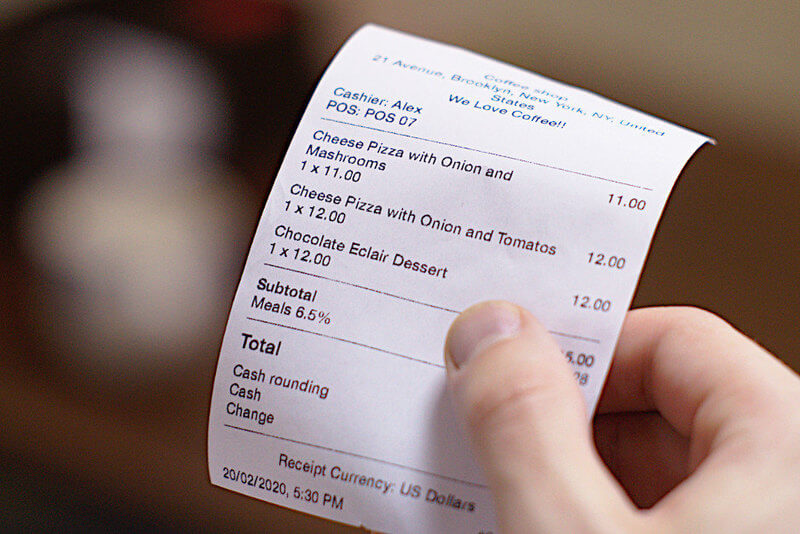
Long names of goods on the 80mm receipt.
Printing mode: graphic or text. It relates to the way printers can receive information. Graphic mode - pixel by pixel, text - as alphabet symbols. Modern printers can work in both modes. Graphic mode allows printing images on receipts, such as the company logo. The significant advantage of this mode is the ability to print text in all possible languages. However, printing in graphic mode will take more time than the text mode. Printing in text mode cannot print graphics, such as a logo. Also, a printer may not contain some languages, and will not print on them. Initially, printers include text symbols in a dozen languages.
Printers with auto cut paper would be preferable in a busy environment. They can give an advantage of a few milliseconds.
Connection with external devices such as a cash drawer or a kitchen bell. If you plan to use a cash drawer in your business, check if your printer has an RJ11 socket. It looks similar to the LAN socket for Ethernet but slightly smaller. To this socket, you can connect the kitchen bell (buzzer) to attract the attention of the cooking staff to the printed kitchen order.
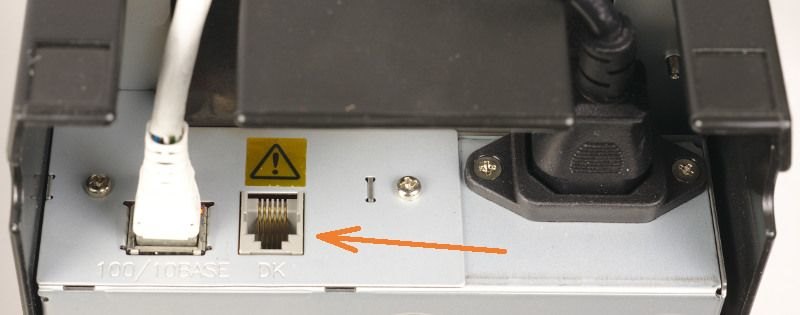
Socket for a cash drawer on the receipt printer
Start paying attention to the printing speed only if the majority of your customers buy a lot of items at once (your receipts are long, tens or hundreds). Only in this case, you may save a few seconds on printing each receipt if you choose a faster printer. Otherwise, on short receipts with a few items, the advantage of the printing time of a few milliseconds would not be significant.
Integrated printer. Some receipt printers are combined with other devices needed for retail and restaurant business. The Star mPOP is a combined Bluetooth POS receipt printer and a cash drawer. Such a device will take less space and have fewer wires.
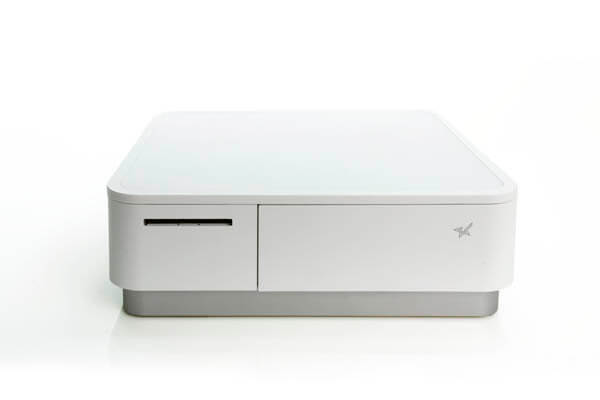
The Star mPOP combined receipt printer and cash drawer
Some devices contain many components of POS (screens, printer, scanner, card reader, customer display, etc.) in one body device. The product line of such devices may have a variety of models of different sizes. It may be an excellent choice to consider such an integrated all-in-one solution for small business retail shops or cafes. The more customers you have per day in your store, the bigger the size of the device you should choose. The more significant device has bigger compartments for loading paper, and one role may give many receipts.
The benefit of such an integrated device is that you save time and money on buying only one piece of equipment. The cons - if your device stops working, you need to change the whole machine.
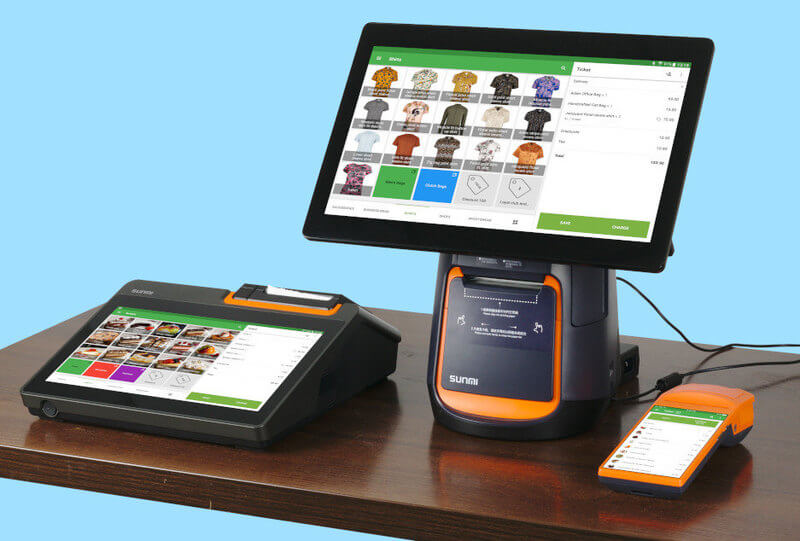
Cashier machines from SUNMI
Choosing a receipt printer should be based on the business parameters of the place of their work. Here are some questions that you can ask yourself. Answering them will help you to make the best choice.
- Are you going to print receipts, bills, or kitchen orders?
- How far do you plan to place your printers from the POS?
- How many customers do you have per day on average?
- What is the length of your product names?
- What is the length of your average receipt?
Collect necessary information about your business and follow the recommendations described above and choose the best printer for work.
When your business grows, you may need to change the printer model to suit the new circumstances better. If the quantity of daily visitors grows and your average receipt becomes extended, you may need the printer with a more significant paper load. Do not hesitate to change the model of the printer.